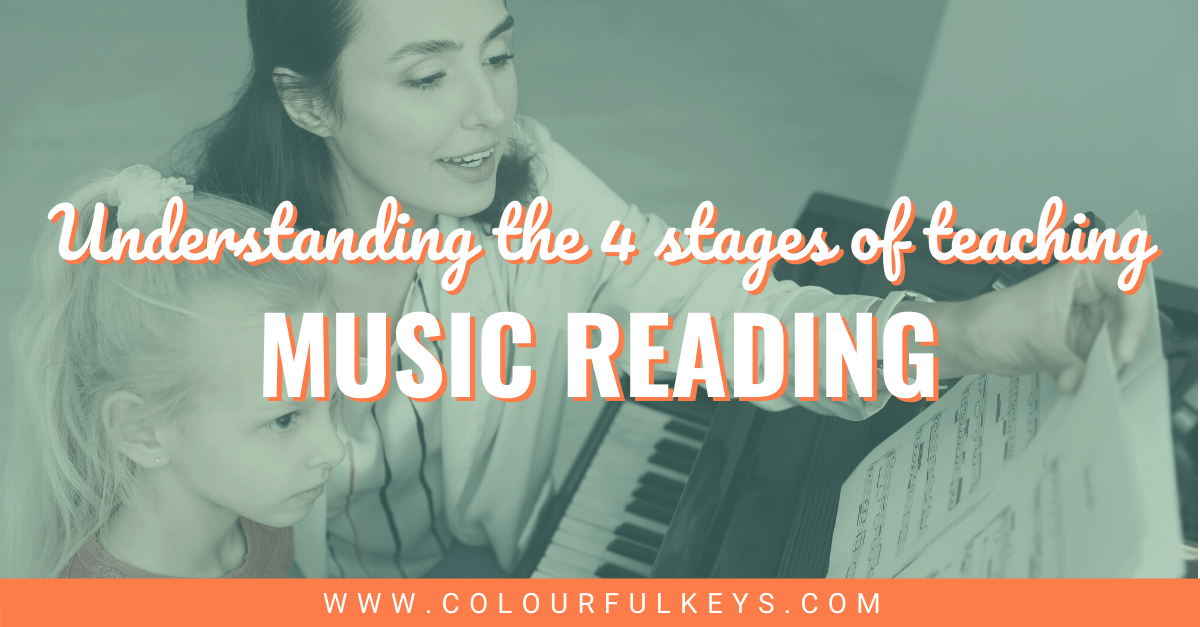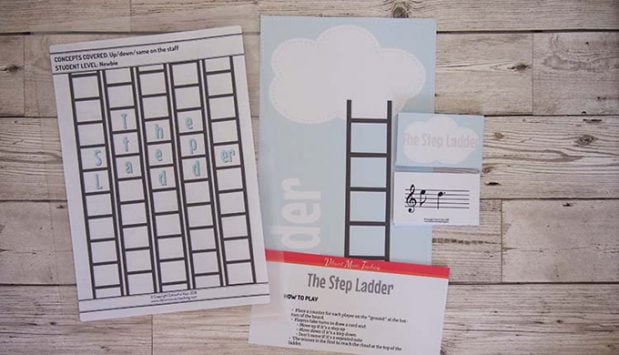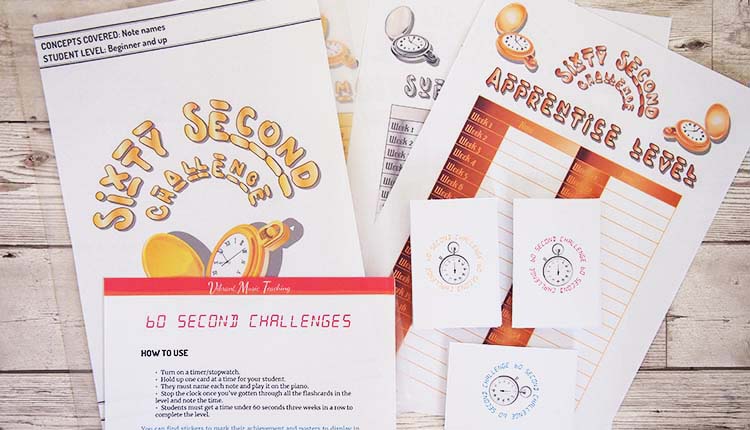Many of us stumbled our way through learning to read music as students, and don’t necessarily want to teach the way we were taught. But what’s the most effective method of teaching music reading to kids?

Through years of experience, I’ve come to see teaching music reading to children as falling into 4 basic stages – no matter what repertoire they are learning or method book we’re following. Implement these 4 key stages and you’ll find your students become much more confident music readers.
Stage 1: Pre-reading Games
Stage 1 is all about preparing students for reading music by covering some of the concepts before they’ve ever encountered a grand staff on the music stand. Through games, you can explore concepts such as:
- Directional reading (up/down) with games like Hill Hike and Twirl-a-Whirl
- Line and space notes with Line, Space, Leapfrog
- Finger number patterns with Tippy Taps
- Piano keys with Letterama and Musical Alphabet Memory
- Music alphabet patterns with Gator Gaps and Betty Blanks
- High and low notes with Flying Fish Frogs
In stage 1, you can also get students comfortable seeing different note values with games like The Step Ladder and start to explore the floor staff.

While you’re laying this groundwork, pay careful attention to any confusions as they come up. Some kiddos will find up and down tricky, others might get easily distracted by the note stems and flags and not pay attention to the heads. This is important information for what you need to cover in more depth.
Stage 2: Landmark notes, 2nds and 3rds
For most of my students, stage 2 starts a few weeks before they start reading on the staff. Up until this point in their studies, they would have been doing lots of rote pieces, improvisation and some pre-reading work in a method book or using Piano Safari Sight Reading Cards.
Stage 2 is probably the most crucial stage. This is when you will introduce a few landmark notes using games like:
It’s great to get really solid with just a few landmark notes like this before getting your student to work on naming notes across the full grand staff. The reason this stage is crucial, however, is because of the work you’ll do on 2nds and 3rds (or steps and skips, if you prefer).
If you get your students into the groove of reading using intervallic patterns early on, they will reap the rewards as they move along their musical journey. So take the time to play lots of games which work on 2nds and 3rds!
Here are some of the Stage 2 favourites in my studio, in addition to the ones mentioned in Stage 1:
And of course, plenty of time with the floor staff to explore landmark notes and 2nds/3rds, too. I love my floor staff. 😍
Stage 3: All notes and 2nds – 5ths
This stage might sound like a big jump but if your students know the landmark notes really well and have had enough practise with 2nds and 3rds, it will go very smoothly.
For note names at this point, you have 2 options. Either you let your students work out the notes from the landmark notes they already know, or you use the skips alphabet to get them working with the full staff.
The first option will work great for some students, but others will find this too cumbersome.
That’s where the skips alphabet comes in.
I learnt this way of teaching music notes from Piano Safari and, for many students, it’s the easiest route towards mastering all the note names quickly.

If you’ve been reading the blog for a while, you might know that I’m not a fan of mnemonics. The skips alphabet is different from a mnemonic because it uses one pattern for the entire grand staff, and students aren’t converting words back to letters.
If you’re a Vibrant Music Teaching member, you can see how I teach the skips alphabet in the videos on the FACEjibbidy-jibbidyFACE page.
Not a member? You don’t know what you’re missing! Visit the membership site to learn more and join in all the fun!
While working on mastering notes across the full staff and conquering the 60 Second Challenge, your students can also start to expand their interval confidence with 4ths and 5ths using games like Swifterval and Nimble Neighbours while playing lots of pieces that use these intervals.

Subscribe to the newsletter and get the 60 Second Challenges Kit.
Enter your details to subscribe to the newsletter for piano teachers with information, tips and offers.
I hate spam as much as you do! I will only send you emails related directly to piano teaching and you can unsubscribe at any time.
Stage 4: Freedom!
It’s a good idea to keep a pretty tight rein on the curriculum in your students’ first years of music study. If you take your time with the first 3 stages, though, you can get a lot looser from here on!
Explore music that your students request, and give them plenty of choices in a wide variety of genres.
Great music readers read a lot. So follow their interests and have them gobbling up music books so they can meet patterns and intervals of all different stripes.
For more ideas, check out these articles about teaching notes and reading.
Take the work out of teaching music reading
If you want to save yourself time and follow a fun and creative curriculum that’s already laid out for you and will work alongside any method book, Vibrant Music Studio members should check out the Piano Powerbooster series.
Note: The games listed in this article, plus many more, are all available to members of Vibrant Music Teaching.
Not a member? Find out more and sign up at the Vibrant Music Teaching membership page. Once you’re a member, visit the library where you can instantly access these resources and put them to good use right away!
Great article!
Thanks! 🙂
This is a wonderful article, Nicola! It’s really helpful to see how you break this down into stages and what you cover in each stage. Thank you! 🙂
Delighted it was helpful, Karissa!
Great and insightful article. I have actually started teaching along these lines aometime ago. With the games it just speeds up the learning process and students are delighted to learn.
Awesome to hear that, Ken!